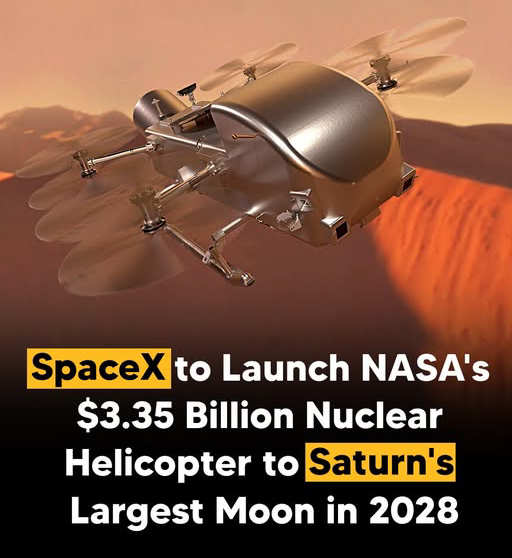SpaceX to Launch NASA's Dragonfly Mission to Titan in 2028

NASA has chosen Elon Musk's SpaceX to send the Dragonfly mission to Saturn's moon Titan. This is an exciting new era for space exploration. This groundbreaking project will use SpaceX's powerful Falcon Heavy rocket to send a rotorcraft powered by nuclear power to Titan. It will take off in 2028. The goal was to find out if the moon could support life.
It will cost $3.35 billion to carry out this huge project, which is an important part of NASA's ongoing search for life beyond Earth. The Dragonfly spaceship will be the first rotorcraft to fly on another planet or moon. This will be a big step forward for space technology. Dragonfly's main job will be to take samples and study Titan's surroundings to find signs of life that could survive there.
Titan is a very interesting world in our solar system. It's the only moon with a thick atmosphere and rivers, lakes, and seas that are always full of water. These qualities make it a great place for scientists to study. The surface and atmosphere of Titan are full of organic chemicals that could help us figure out how life began. Scientists are especially interested in the moon because it might have "prebiotic chemistry," which means conditions that could make life possible.
Getting to Dragonfly will take some time. Planet Titan is 746 million miles away from Earth, which means it will take the rocket six years to get there. Once Dragonfly gets to Mars, it will spend at least two years exploring the surface. Its rotorcraft design will let it fly over different areas, stop, and gather information. We will get a much better look at Titan's chemistry and rocks than we have ever had before.
NASA just gave SpaceX a $256.6 million contract to pay for the launch and other costs connected to it. This shows that the two space giants are ready to work together. The Falcon Heavy launch from SpaceX, which is known for being able to send heavy loads into space, will be the best way to send the Dragonfly mission to Titan.
The chance that Titan could give us important information about how life began is what makes this mission so exciting. Researchers think that the moon's thick atmosphere, complicated chemistry, and liquid bodies might be similar to what Earth was like in the beginning, which could help us understand how life could have started here. NASA wants to learn more about how life might start in other parts of the universe by studying Titan.
Dragonfly will send information back to Earth as it makes its long trip to Titan. This will help scientists figure out what the moon is hiding. This project is a big step forward in our quest to learn more about our solar system and find the answer to the most important question of all: Are we alone in the universe? NASA's Dragonfly mission looks like it will be an exciting trip into unknown land with SpaceX in charge.
--
